

Post time: 02 16,2025
Architectural wire mesh has made one of the highest entries as an interior and exterior design material in architecture in the last few years.
This usage has become increasingly popular in contemporary architecture. Due to its durability, flexibility, and aesthetic appeal, it stands as a favorite among architects and designers wanting to break the bounds of imagination and provide stability to their structures.
From glamourous façades and privacy screens to atmospheric interior partitions and décor accents, architectural wire mesh has become adopted for its singles, clean look, and functionality.
Used to embellish a building façade or as a design accent in high-end interiors, its ability to meld into various design schemes ranging from minimalistic to industrial to organic has solidified wire mesh as a cornerstone in the future of architectural innovation.
As the application continues to be a trend in residential, commercial, and public areas, knowledge of selecting and using architectural wire mesh effectively is critical to achieving aesthetic balance and performance in your project.
1. The Need to Learn Before Buying Architectural Wire Mesh
To buy architectural wire mesh, an in-depth thinking process must be followed to ensure the right product is selected for a specific function. Without a thorough understanding of the characteristics, applications, and quality-affecting circumstantial factors regarding that product, the client runs the risk of making a very costly mistake that would interfere with the design and functional stability of their work. Such blunders hinder solid designs from being introduced, create installation difficulties, and give rise to unplanned post-maintenance considerations, among other project-detrimental delays in the schedule.
By understanding these important tips and considerations ahead of purchasing, the client can step around problems and, therefore, realize the benefit from their investment and build to the desired goals, collectively enhancing the efficacy of their architectural design.
2. What is Architectural Wire Mesh?
Architectural wire mesh basically describes the decorative metallic mesh panels, which are made with metallic or alloy wires, specifically designed for decorative and functional uses in architectural applications. Differing from industrial meshes, this kind is beforehand created to satisfy some defined aesthetic as well as structural necessities for assorted building and design purposes. Architectural wire mesh comes with various patterns, finishes, and materials, allowing easy incorporation within modern, contemporary, and even classical designs.
This makes architectural wire mesh a first-choice candidate for applications ranging from building facade and ceiling panels to infill railing and decorative partitions.
3. What are the Advantages of Architectural Wire Mesh?
You would have to ask yourself why you actually need architectural wire mesh before going on the market. This specialized building framework is not considered a common construction device that is readily available in most of the local markets.
So the heart of the matter goes: Is it a mesh that I cannot do without for my project? If yes, the next consideration will be to find a reputable dealer or manufacturer who can cater to your wants without compromising quality.
Architectural wire mesh serves different purposes: as a design element to the space, as a modern external styling for buildings, or as a functional tool for other purposes such as providing ventilation, occultation from sunlight, and security. Knowing your particular requirements will steer your choice on the type of mesh desired, pattern, and finish so that you get the result you have in mind.
4. Understanding Your Role as a Buyer
4.1 Wholesalers or Distributors
If you're a wholesaler or distributor, you might be seeing the architectural wire mesh prospect as exciting.
Key to earning maximum profit is the appropriate choice of optimized style options and standard sizes that fulfill the market's needs within a short time. Call us or other reputable architectural wire mesh manufacturers and ask for what sizes and patterns are being sold most in demand.
Buyers have a variety of preferences when it comes to decorative building materials.
In response to this variability, keep a wide range of patterns for different uses, including:
► Internal applications such as wall cladding and ceiling components
► External applications such as building facades and sunshades
► Partition infills and railing infills for security and aesthetic reasons
► Cabinet inserts that bring an element of sophistication
► Furniture accents that bring an added touch of design appeal
► Commercial cladding for retail and hospitality applications
► Shopfitting and display fixtures that attract customers
A balanced option helps you fulfill the demands of consumers seeking to purchase a variety of designs and functionalities.
Standard Sheet Sizes
Although in most cases, wire mesh manufacturers will say that there are no standard sizes used, we normally would prefer custom sizes so that they would conform to the particular requirements of that particular client's project.
Nevertheless, as a general observation and from our experience, the following are common sizes useful in different applications:
• 1400 x 2900 mm (4.59' x 9.51'):
A good size in terms of general market utility. Well, not all customers can use such big sizes, so whatever they do not use from its scrap will be of high value for cabinet and furniture industries whereby in most cases it will be used as infill panels.
• 1200 x 2900 mm (3.94' by 9.51'):
An extremely versatile size, easily cut either down to 2440 or 2400 mm for uses such as taller infill panels or other custom uses.
• 1220 x 2440 mm (4' x 8'):
This is the most generally accepted sheet size internationally for sheet metal works and is widely available on the market for most uses.
• 1200 x 2400 mm (3.94' x 7.87'):
A second standard sheet size within the sheet metal industry and also a great all-purpose size.
4.2 Builders or Shop Fitters
4.2.1 Finding Your Needs: Standard or Bespoke Mesh Designs:
For builders or shop fitters, choosing the perfect panel to suit standard jobs or unique applications becomes of utmost importance when it comes to an architectural wire mesh panel for normal use or custom design for specialized jobs.
Normally, standard types of mesh are fine for general purposes and may require custom designs for odd architectural features.
Builders working on high-profile projects, for example, often benefit from customized panels or specialty finishes to match the overall design intent.
4.2.2 Coordination with Manufacturers
Close coordination with decorative wire mesh manufacturers for correct specifications and clear lead times to avoid project delays is essential. How the mesh will be installed, be it framed, tensioned, or mounted, can also affect the type of mesh you purchase. Make sure you clarify such details upfront for easy installation.
4.2.3 Preparing for Contingencies: Ordering Additional Material
A good tip is to buy a couple of extra pieces of large sheets to have them in reserve.
Experience has taught us that the specifications of the project tend to be inaccurate on the low side and often unanticipated problems arise during fabrication due to waste.
Such delays may necessitate a repeat order for the material. Be aware that reproduction and additional traveling cost both time and money.
Such backup preparedness may save you a lot in the long run.
4.3 Cabinet Maker
Architectural wire mesh presents an opportunity for cabinetmakers looking to create innovative door inserts or focal points in their design marriage of aesthetics with strength.
Unlike standard glass or wood inserts, which have strength and elegant looks, wire mesh adds to the visual attractiveness of cabinet doors.
It's a product that can find its way into all styles- from modern through traditional therefore into the most luxurious items of furniture, adding intrigue visually.
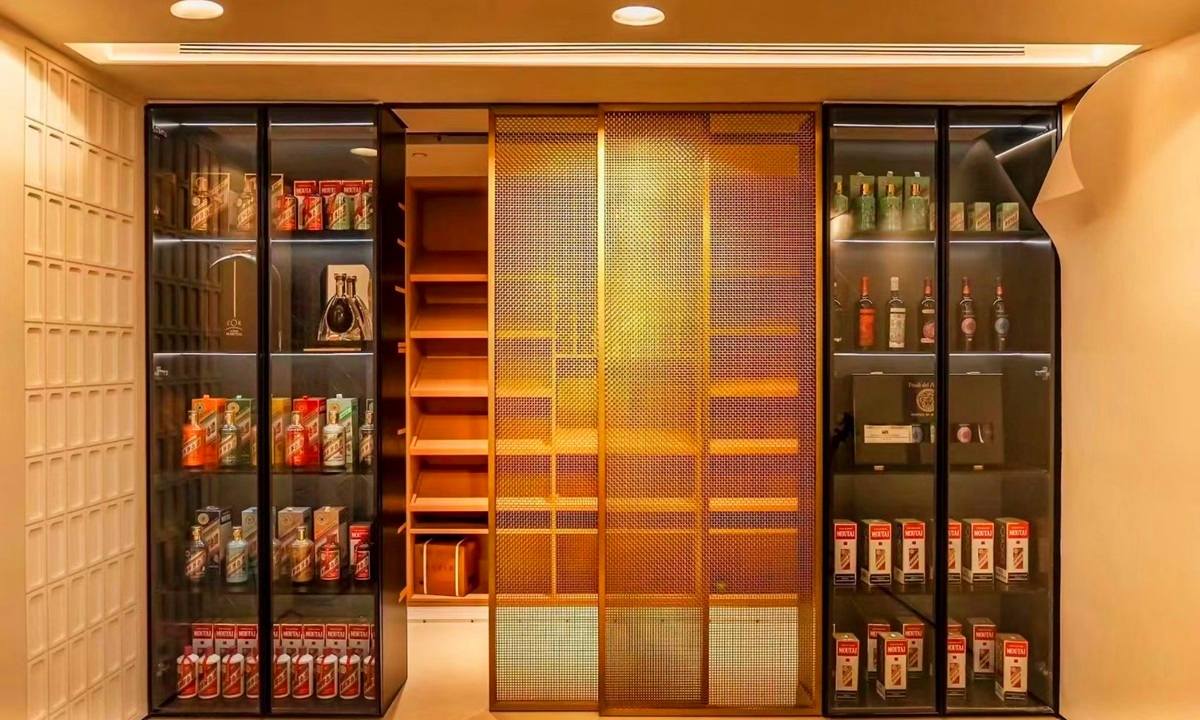
4.3.1 Choosing an Appropriate Pattern and Finish
While buying architectural wire mesh, work with suppliers to select a proper pattern and finish that best suits your cabinet designs.
Decorative Metal Mesh with different patterns and finishes has different textures, so choosing the right one will enable you to accomplish the visual effect desired minimalist, sleek look, or something more elaborate and ornate.
4.3.2 Quality and Availability Planning
When buying wire mesh, make sure to deal with reputable decorative wire mesh manufacturers providing quality material that can withstand long periods.
Also, consider the convenience of the availability of metal mesh in your desired sizes in the domestic marketplace.
Generally, it is more convenient and faster when purchasing from domestic distributors.
If you do not have local sources, you can opt to use a skilled and reputable international architectural wire mesh manufacturer such as Metart Building Tech which specializes in producing bespoke architectural metal mesh panels made especially for your cabinet-making needs.
Moreover, stocking a variety of best-selling patterns and finishes allows you to meet customer orders immediately and avoid production delays.
A smooth supply chain coupled with quick access to your materials allows a smooth cabinet-making process so you can meet client expectations time after time.
4.4 Furniture Manufacturers
Decorative furniture manufacturers that would like to include distinctive materials in their designs can go to architectural wire mesh to add a new elegant touch to their creations.
From chair backs to table panels to ornaments, the decorative wire mesh panels can be cut to match the precise requirements of the design.
Purchasing locally as with all the other recommendations for cabinet builders is always the best option, for you can get what you want after you need it.
Buying it directly from foreign markets also provides you options to use custom patterns and new finishes that one would not have in his locale.
This enables the manufacturer to make one-off contributions to the interior and the exterior of buildings and hence gives them an edge in the market.
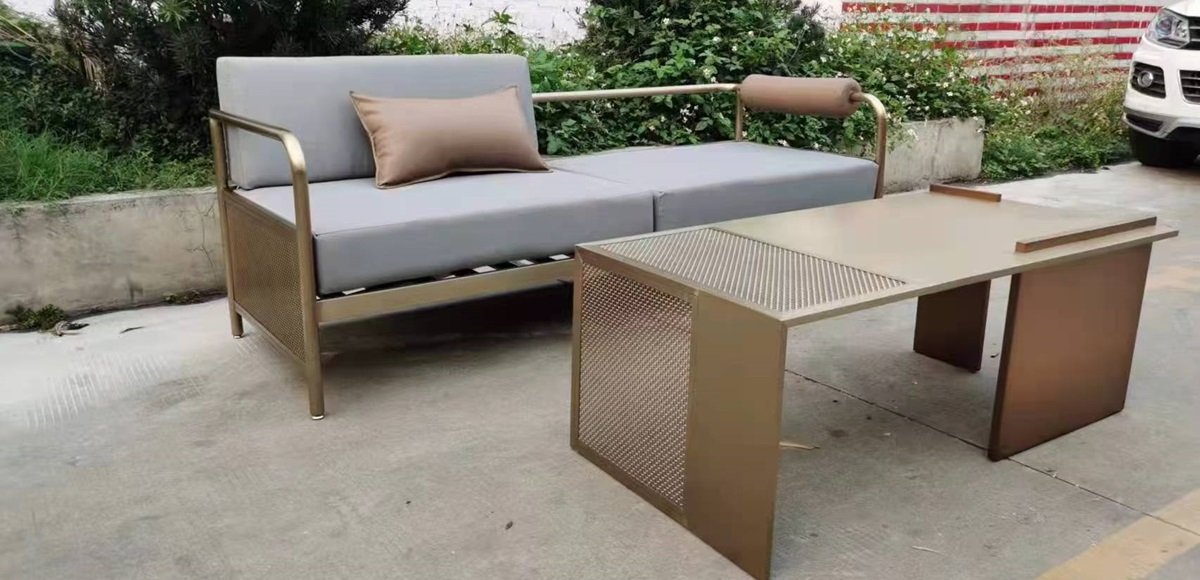
4.5 End-Users and Domestic Customers
The domestic customer will typically find the greatest convenience in purchasing architectural wire mesh from local distributors.
If you visit the local vendor, you can see it with your eyes, touch it, and examine the material at close range, which is a vital procedure to ensure it meets your requirements in finish, color, and quality.
But, if there is no local option available, it could also mean sourcing the material from accredited online metal mesh manufacturers.
When buying online, do not forget to consider asking for samples or swatches to be able to see the material much clearer. And do not forget that there are shipping charges when it comes to shipping large panels, especially oversized ones. Well worth adding these considerations into the plan of how much your purchase will cost.
End-users should also consider:
The precise application and environment that the mesh will be used in (indoor or outdoor) The type of finish most appropriate to the theme of the design (say, matte, polished, or powder-coated)
Any maintenance requirements the mesh will need after some time
Finally, understanding your position as a purchaser and the exact requirements for your particular market or project will ensure that you are making educated buying choices in deciding upon the very best architectural wire mesh for your needs.
5. Why Stainless Steel is So Widely Used in Manufacturing Architectural Wire Mesh?
5.1 Unparalleled Strength
The manufacture of stainless steel wires and ribbons for architectural wire mesh is done to very stringent specifications, with tensile strength values as high as 1100 MPa. This strength is imparted to the wire through very aggressive annealing, which assures elasticity, resistance, and the ability of the material to cater to diversified security requirements.
In any location of heavy usage—safety barricades, building supports, and other civil applications—wire mesh will be the mothership, giving strength to various architecture.
5.2 Strength Against Atmospheric Agents
Stainless steel is popularly known for its high endurance; hence, it would fit well for both interior and exterior structures. Stainless steel mesh indoors presents a modern, sleek appearance yet remains resistant to wear and tear in the long run. By contrast, it performs so much better outdoors, resisting severe weather conditions to an absolute degree, environmental pollution challenges, and exposure hazards. Able to withstand temperature changes, humidity, and UV rays, stainless steel wire mesh serves not only its operational purpose but also an aesthetic one for several decades.
5.3 Corrosion Resistance: SS304, SS201, and SS316
Their corrosion resistance is one of the principal physical qualities that render stainless steel suitable for works of architecture.
Some of the stainless steel grades most commonly used are SS304, SS201, and SS316, with their differing properties and applications.
Within these, SS304 is the most used, with very high corrosion resistance, and is best suited for decorative and structural applications for both interior and exterior use.
In other words, SS201 is cheaper, with less corrosion resistance, and is applicable where the exposure will not be great.
SS316, known also as marine grade, has very good corrosion resistance in atmospheres with high salt content or chemical environments.
This makes SS 316 very useful when used in marine environments or for coastal or industrial applications where resistance to degradation is becoming important.
5.4 Good Fabrication Traits and Weldability
Weldability and good fabrication properties set stainless steel aside from its other counterparts. For architects and designers wishing to push the envelope of design without compromising on strength, easy welding and bending into a variety of custom shapes helps to provide that freedom. Whatever may be needed to cut, bend, or weld the wire torch to accommodate some architectural detail, stainless steel stands strong and beautiful in the end. The kind of detail work it is brilliantly suited for needs extreme attention and personalization to add character; hence, its use in such decorative applications.
5.5 Designing and the Most Avowed Finishes
Beyond its physical properties, the versatility of stainless steel encompasses its aesthetic potential, thus making it a material of choice to introduce the number of finishes most sought after in building architecture.
It can be tailored to project the understated elegance of its mill finish, through electroplating in finishes of copper, brass, or antique, which rank among the most desired.
One of the most glamorous finishes would be PVD (Physical Vapor Deposition), which renders a highly hard yet highly reflective surface in a rich selection of metallic hues such as gold, rose gold, and black. This finish stands to greatly enhance the beauty of the wire mesh, particularly suited for high-end, modern designs.
Moreover, brass or copper plating not only gives the material a luxe look in a contemporary style, but the antique or aged types can also impart a retro or industrial aspect, thus engendering character and class to an extremely diverse architectural variety.
6. Comparison of SS 201, 304, and 316
6.1 Overall Summary of Chemical Composition.
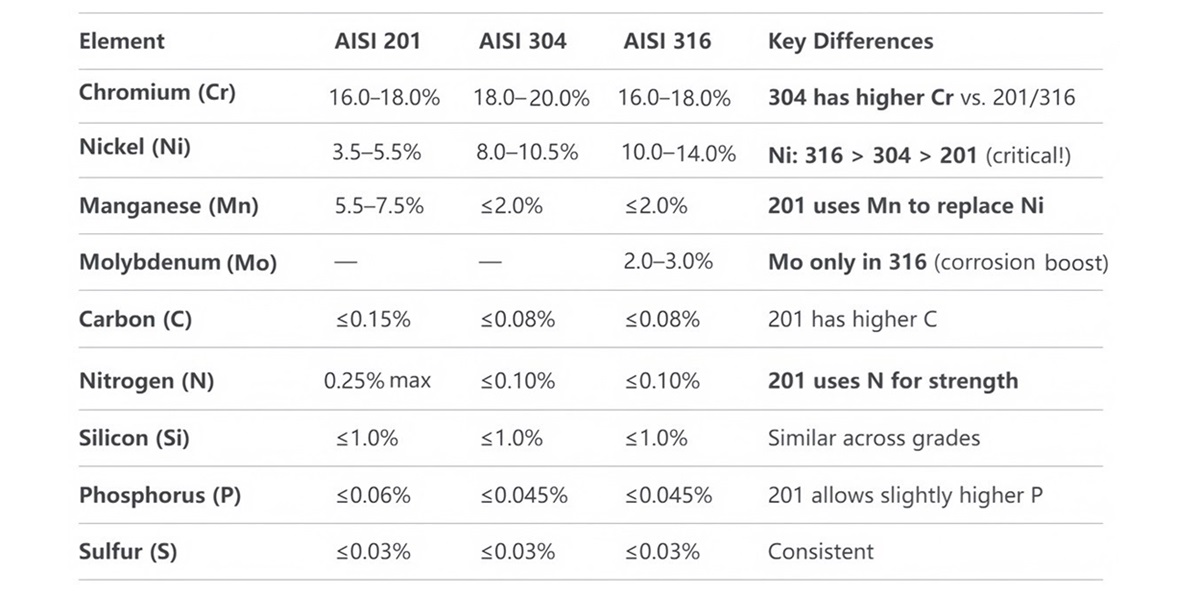
6.2 Nickel Content:
AISI 316, with the highest nickel content, has been most resistant to corrosion and has thus found maximum suitability in architectural wire mesh when exposed to extreme environments, such as in marine or coastal constructions.
AISI 304, with medium strength and corrosion resistance, has found application in interior as well as exterior structures.
AISI 201 is cheaper and less effective in adverse environments, but the finish—say, electroplating with copper or copper alloy—can prolong its effective application while putting compliments into interior applications.
6.3 Molybdenum( Mo):
Molybdenum is present in AISI 316 in quantities of 2-3%, imparting further corrosion resistance, specifically where chlorides are implicated.
AISI 316 would then be fully acceptable for architectural wire mesh in conditions associated with the seashore, building claddings, or any kind of outdoor installation.
AISI 304 does not have molybdenum yet maintains resistance to corrosion and finds application for a variety of indoor and outdoor uses of meshes.
This AISI 201, in the absence of molybdenum, is suitable for low-risk applications, but with electroplating, it is far better for resistance, and thus can even serve as an acceptable option for indoor architectural mesh where corrosion is not a major concern.
6.4 Chromium (Cr):
AISI 304 has a minimal surplus of chromium over AISI 316; however, this amount has practically no significant importance.
The correlation against oxidation corresponds excellently for both grades, especially in their candidature for outdoor applications of architectural wire mesh, such as ornamentation, railings, and facades.
The AISI 304 grade is mainly utilized in the inland cities, whereas AISI 316 is always found in use in the coastal cities in its marine grade.
AISI 201 with its lesser chromium content is a definite no-go for outdoor exposure, although copper or copper alloy coated applications can be chosen for some indoor exposures.
6.5 Applications:
AISI 201 is most economical for indoor decoration applications of wire mesh, particularly if electroplated in copper or copper alloys for good aesthetics and prolonged life.
Thus it serves well for decorative interiors, partitions, or accent furniture in interior design. It is also an important interior material for sheet metal fabrication, e.g., stainless steel enclosures.
The most used material for architectural mesh inside and outside is AISI 304; it is applied for facades, railings, and partitions, relative to its superior corrosion resistance and strength.
AISI 316 is the architectural mesh that is called for in high-performance applications such as coastal areas or industrial environments, where corrosion resistance and permanent stability will be due.
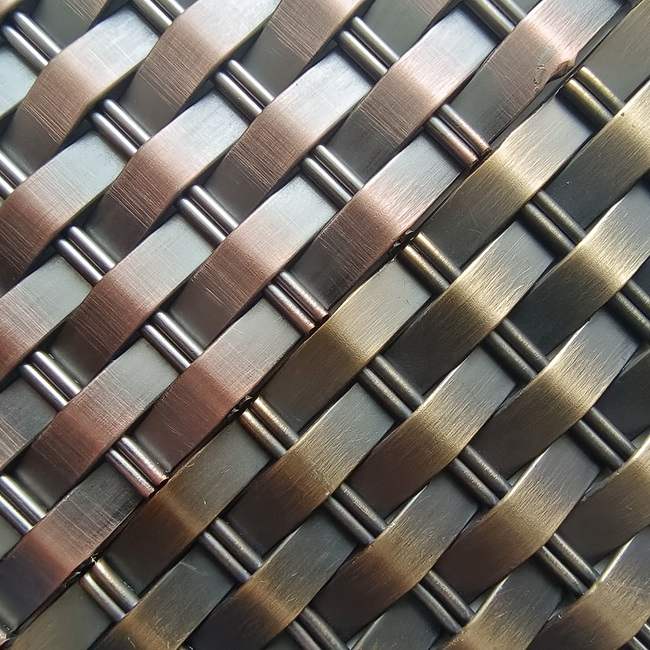
Architectural Mesh for Cladding - Expertly Crafted with Decorative Metal Ribbons
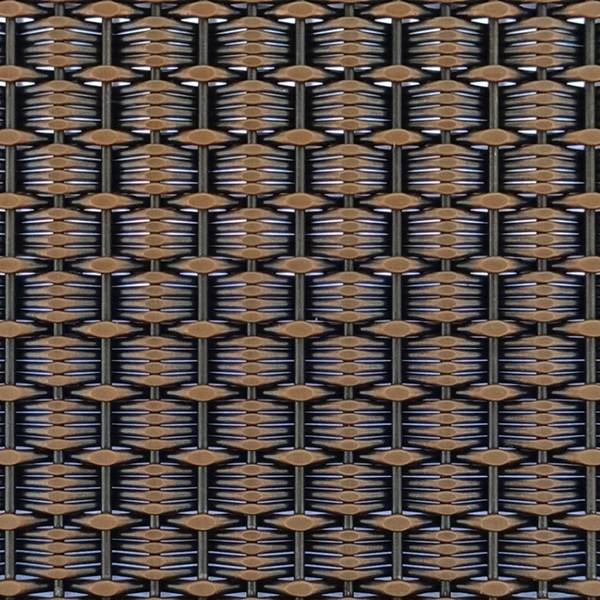
Decorative Metals for Designers and Architects
Designer Metals for Interior Cladding and Decoration including elevator cabin & lobby interiors
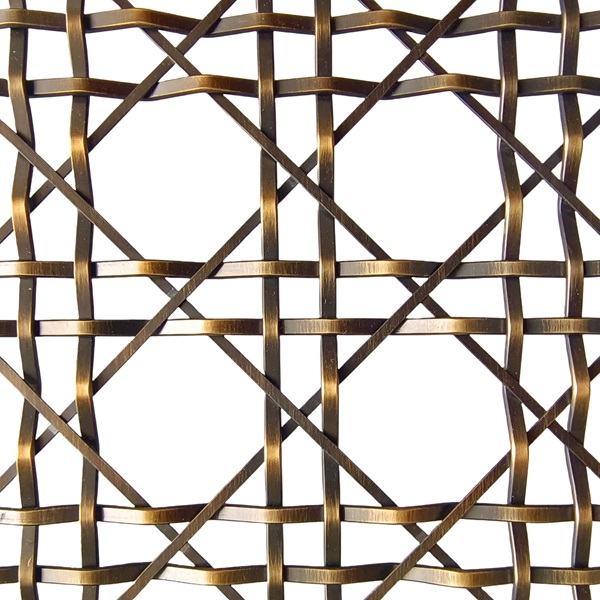
Decorative Stainless Steel Woven Wire Mesh for Ceilings
Decorative Wire Mesh Ceilings

2MM Decorative Wire Mesh with 13MM opening
Decorative Wire Mesh - An trending architectural wire mesh for interiors and exteriors - Get inspired right now.
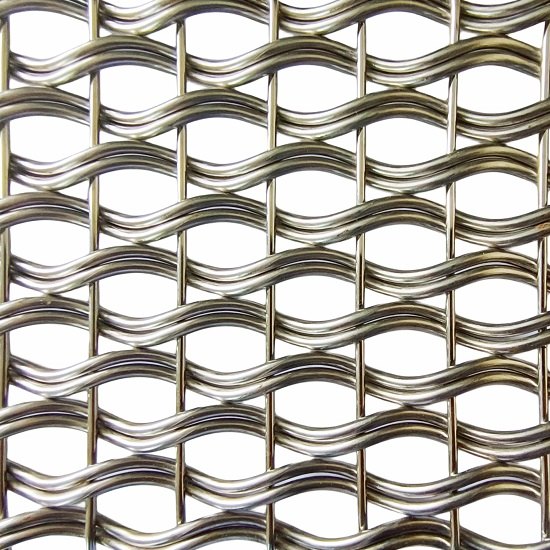
Architectural Woven Wire Mesh for interior design and decoration
METART-WW49 Interior Architectural Wire Mesh

Stainless Steel Facade Decor Wire Mesh 3.45MM Wire Diameter.
Decorative Facade Wire Mesh

Most Popular Material: AL Grade 3003, AL Grade 5052, Pre-Galvanized Steel Sheet.
Decorative Perforated Sheet

Antique Copper Architectural Mesh Strip 2.4x1.2mm, Round Wire 1.8mm
METART-WW17LW Antique Copper Architectural Mesh for Home & Decor
©COPYRIGHT METART BUILDING TEC CO., LTD | ALL RIGHTS RESERVED | PRIVACY POLICY